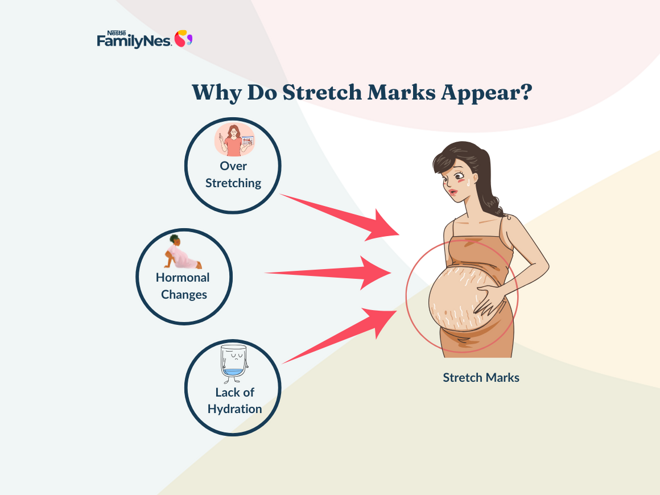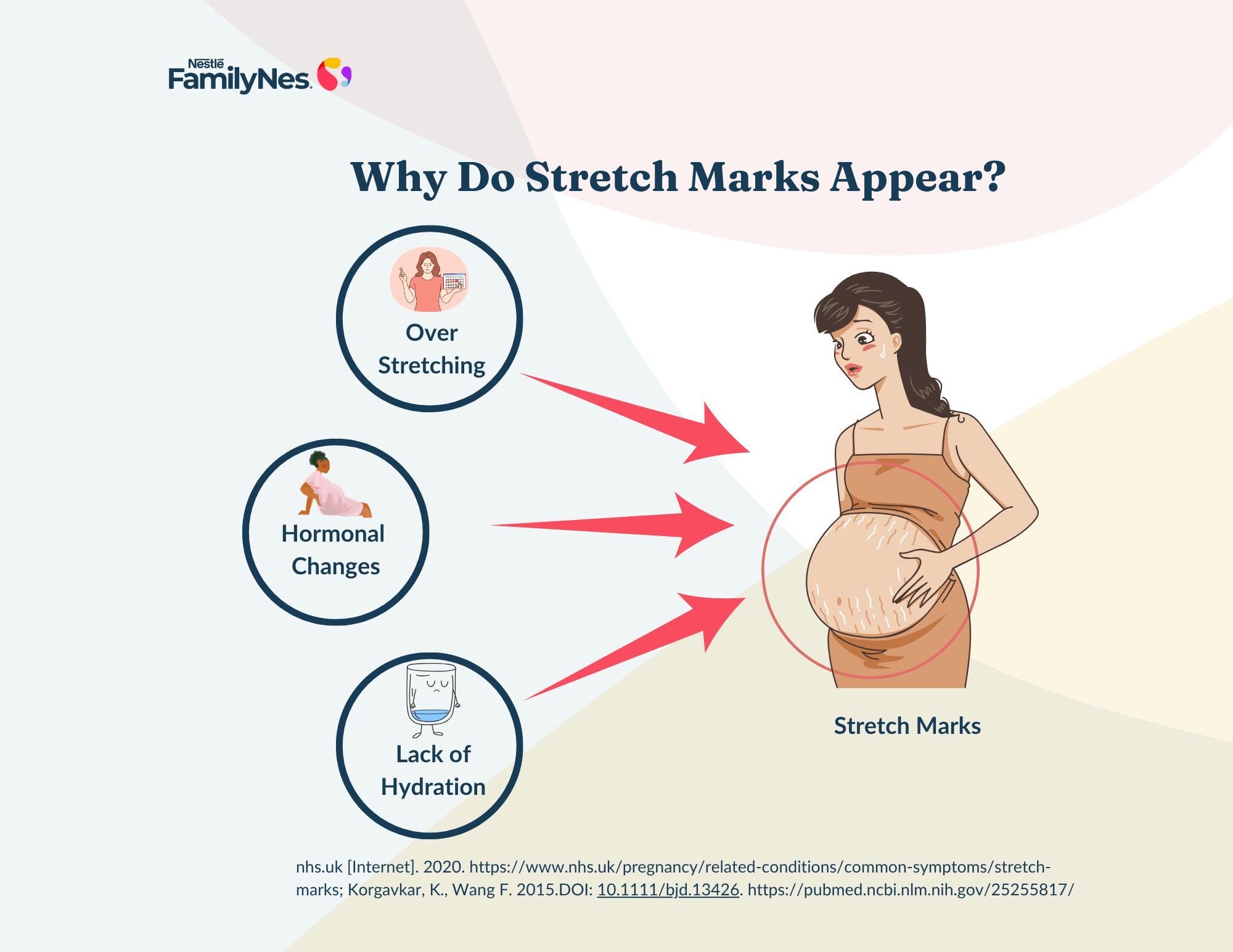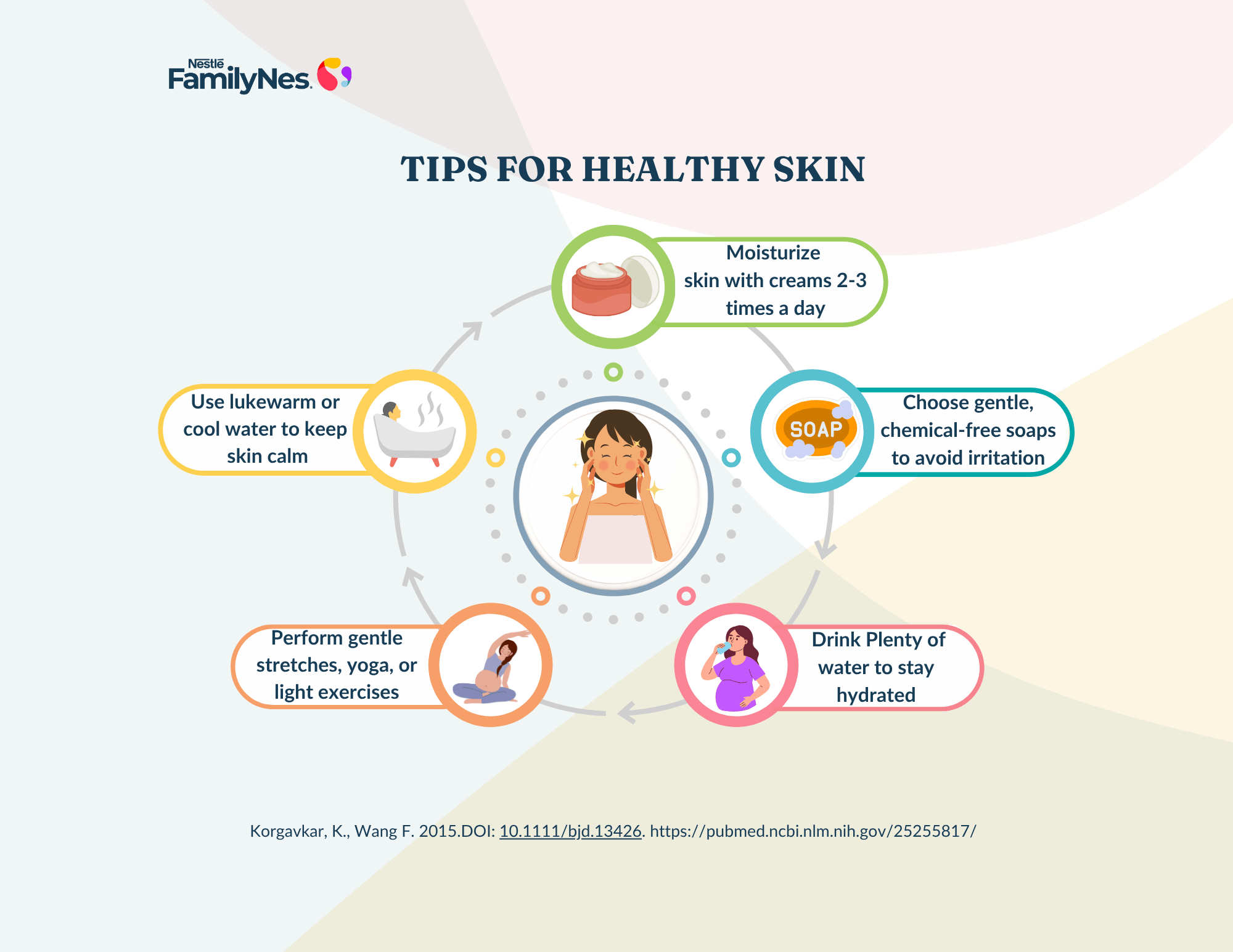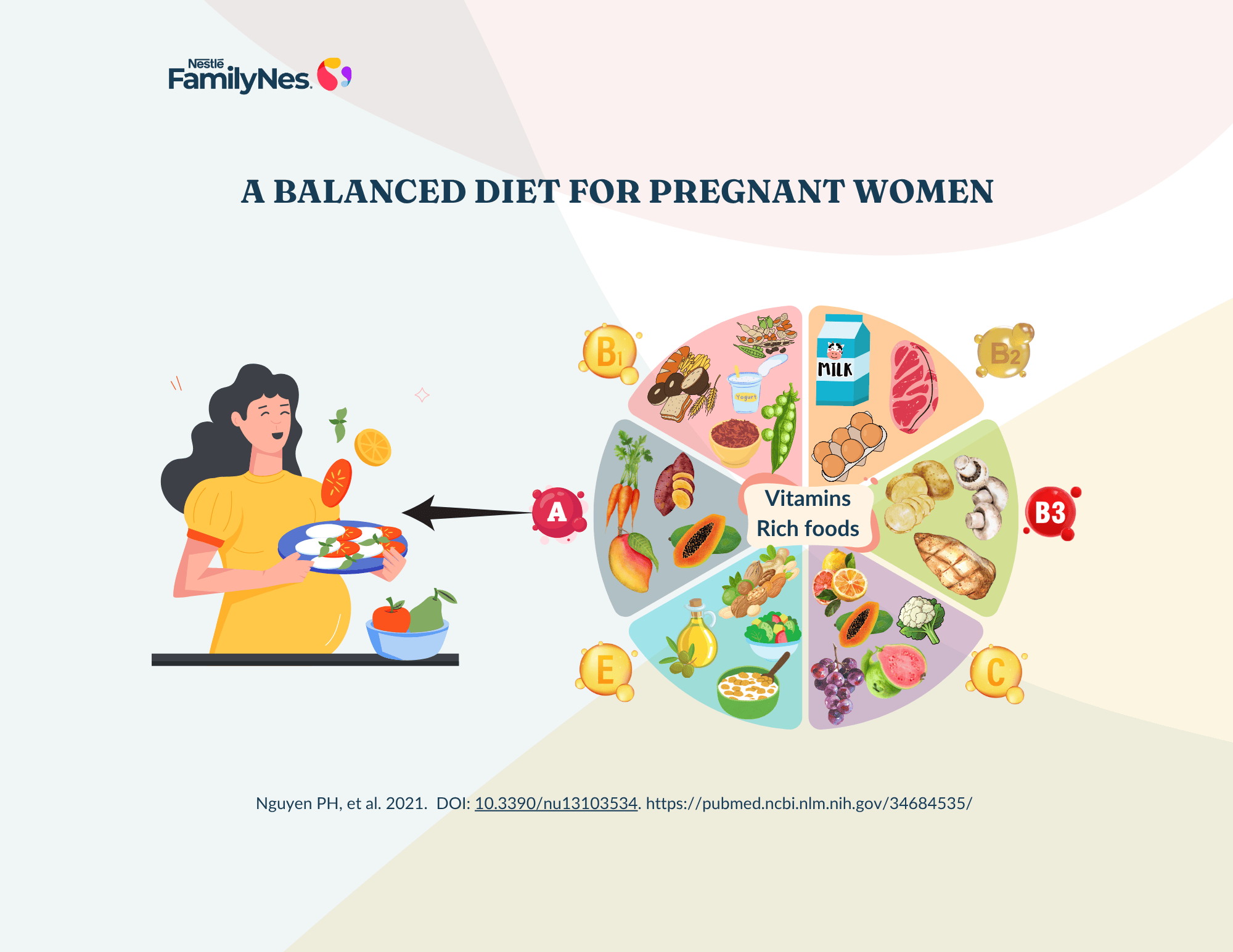
A beautiful journey—with or without stretchmarks
Let’s be real: 8 out of 10 pregnant women get stretchmarks.1 While it's natural to want smooth skin, these little lines are also a beautiful reminder of the amazing work your body is doing; growing a new life. So, whether you want to care for your skin or simply embrace the changes, remember- your body is incredible just as it is.2
Why do stretch marks happen?
Excessive stretching and lack of hydration often lead to stretch marks. They usually show up in the third trimester, when your baby’s growth is in full swing and your skin stretches to try and keep up, particularly around your belly, breasts, thighs, and sometimes even the arms. This rapid stretching and hormonal changes can lead to tiny red or purple lines on your skin.1,2
Some people are more likely to get stretch marks because of their genes. If your mom had them you might too.3 There’s also a debate that pregnancy hormones might play a role in stretch marks. These hormones can cause your skin to hold extra water, which may affect how stretchy and strong it is.1

How do you reduce stretch marks?
While there’s no fail-safe way to avoid stretch marks entirely, taking care of your skin and staying hydrated can help minimize them. Here are a few tips:
Nourish your skin from the inside out
Drink plenty of water to keep your skin soft and stretchy. Apply moisturizers or oils 2-3 times a day to prevent dryness. Look for products with Vitamin E, collagen, or elastin to help improve skin elasticity. Before choosing any skincare product, it's always a good idea to consult your healthcare provider for recommendations that are safe during pregnancy.2
Eat Skin-friendly foods
A well-balanced diet is crucial for pregnant women in India. It should include a variety of fruits, vegetables, whole grains, lean protein sources, low-fat dairy products, nuts, seeds, and healthy fats, while restricting processed foods, ensuring sufficient intake of folic acid, iron, calcium, and vitamins, and prioritizing thoroughly cooked food to mitigate the risk of foodborne illnesses.4
Eating a balanced diet rich in certain vitamins and minerals can also support your skin’s elasticity.

- Vitamin A: Carrots, sweet potatoes, spinach, pumpkin, mangoes
- Vitamin C: Citrus fruits, guava, cauliflower, and grapefruit
- Vitamin B1: Whole grain cereals, legumes (beans), brown rice, groundnuts, lentils, curd (yogurt), green peas, sunflower seeds
- Vitamin B2: Milk, eggs, lean meats
- Niacin—Vitamin B3: Green peas, mushrooms, potato, brown rice, chicken breast
- Vitamin E: Nuts, vegetable oils, green leafy veggies, and fortified cereals are all great sources
- Multivitamins: A prenatal multivitamin with vitamin E can support your skin and your baby’s healthy development. Always talk to your healthcare provider before taking any supplements for you and your little one.5

Be gentle with your skin
Hot showers might feel soothing, but they can strip your skin of moisture and weaken its elasticity. Instead, use lukewarm or cool water and use gentle soaps to avoid irritation. Afterward, lock in that moisture with a recommended moisturizer or oil.6
Stay Active
Exercise is great for your overall health and improves blood flow to your skin, which can help reduce the likelihood of stretch marks. Gentle stretches, yoga, or light exercises can help keep your skin elastic, especially in areas like your belly, thighs, and breasts. And don’t forget to stay hydrated before, during, and after your workouts!7
Your Skin, Your Story
If you do get some stretch marks, that’s completely okay. Over time, they fade, and they are proof of the amazing journey your body has been on. Whether you choose to care for them or embrace them, just remember—your incredible journey into motherhood.
This content is not a substitute for professional medical advice. Please consult your healthcare professional
References
- nhs.uk [Internet]. 2020 [cited 2025 Feb 27]. Stretch marks in pregnancy. Available from: https://www.nhs.uk/pregnancy/related-conditions/common-symptoms/stretch-marks/
- Korgavkar et al K, Wang F. https://pubmed.ncbi.nlm.nih.gov/25255817/. 2014 [cited 2025 Feb 27]. Stretch marks during pregnancy: a review of topical prevention - PubMed. Available from: https://pubmed.ncbi.nlm.nih.gov/25255817/
- Salter SA, Kimball AB. Striae gravidarum. Clin Dermatol. 2006;24(2):97–100.
- Seshiah et al. Preganacy balance diet India. National Institute of Public Cooperation and Child Development.
- Nguyen PH, Kachwaha S, Tran LM, Sanghvi T, Ghosh S, Kulkarni B, et al. Maternal Diets in India: Gaps, Barriers, and Opportunities. Nutrients. 2021 Oct 9;13(10):3534.
- Agopian A, Waller DK, Lupo PJ, Canfield MA, Mitchell LE. A case–control study of maternal bathing habits and risk for birth defects in offspring. Environ Health. 2013 Oct 16;12:88.
- Cooper DB, Yang L. Pregnancy And Exercise. In: StatPearls [Internet]. Treasure Island (FL): StatPearls Publishing; 2025 [cited 2025 Feb 28]. Available from: http://www.ncbi.nlm.nih.gov/books/NBK430821/


